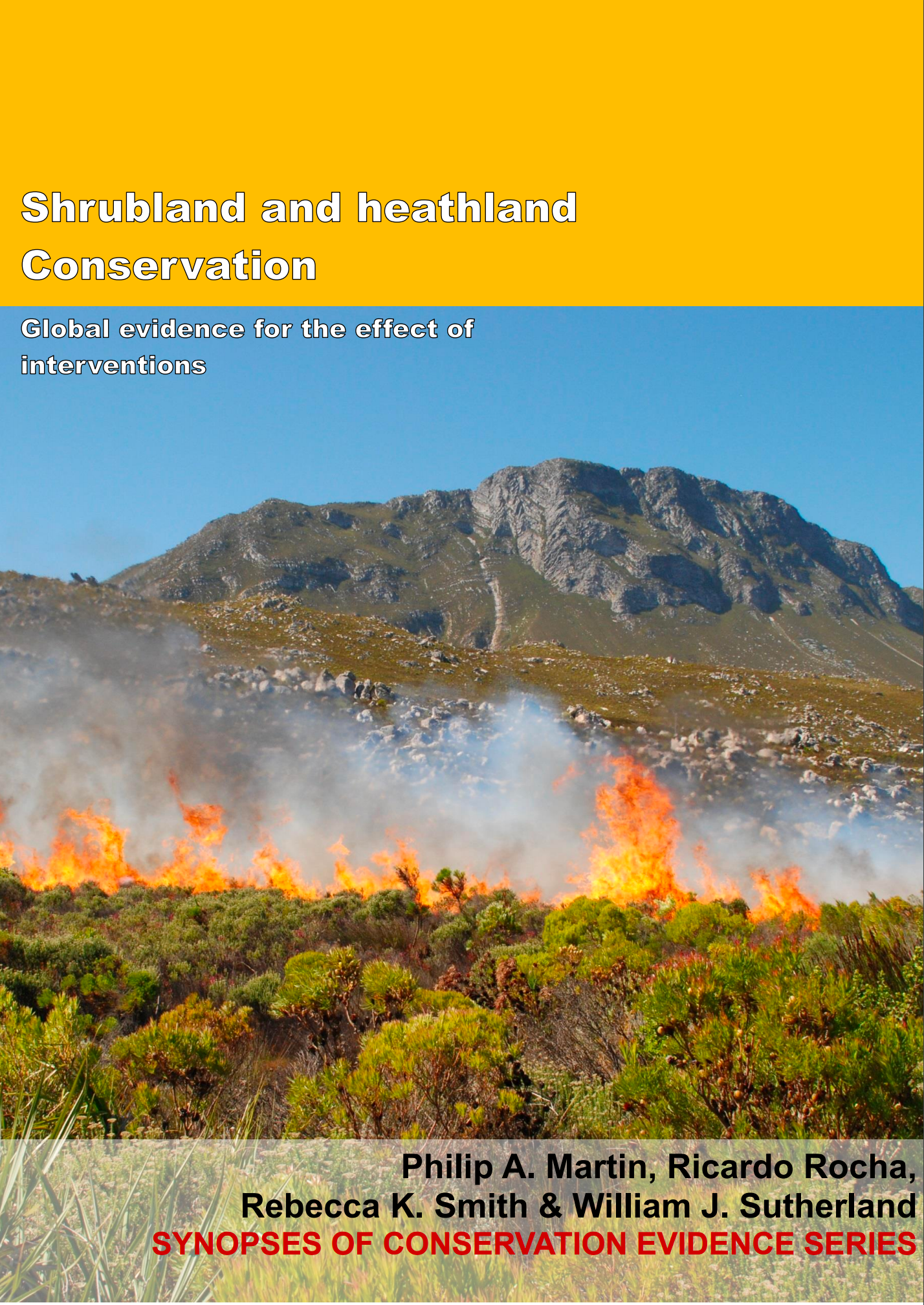Use cutting/mowing to mimic grazing
-
Overall effectiveness category Unknown effectiveness (limited evidence)
-
Number of studies: 4
View assessment score
Hide assessment score
How is the evidence assessed?
-
Effectiveness
30% -
Certainty
25% -
Harms
10%
Study locations
Supporting evidence from individual studies
A replicated, randomized, controlled, before-and-after trial in 1998–2003 in three heathlands in Northern Spain (Calvo et al. 2005) found that cutting heather Calluna vulgaris to mimic livestock grazing increased the number of plant species in one of three cases but reduced the cover of heather in three of three cases after two years. In one of three cases, the number of plant species in areas that had been cut was higher two years after cutting (9 species/plot) than before cutting (7 species/plot) and the number of species was higher after cutting than in areas that had not been cut (5 species/plot). Data on the number of plant species was not reported for two of the three heathland sites. In the three heathlands cover of heather after cutting (5–11%) was lower than before cutting (55–83%) and cover after cutting was also lower than in areas that had not been cut (76–83%). In 1998 in each site all heather plants were cut in five randomly selected plots, while the other five plots heather plants were not cut. Vegetation cover was assessed in each plot before cutting and then in 1999–2000.
Study and other actions testedA replicated, randomized, before-and-after study in 1998–2003 in three heathlands in Northern Spain (Calvo et al. 2007) found that using cutting to mimic livestock grazing did not increase the number of plant species or cover of cross-leaved heath Erica tetralix, but reduced the cover of heather Calluna vulgaris, and increased grass cover In the three sites, five years after cutting the number of plant species (4–12 species/plot) was not significantly higher than before cutting (4–11 species/plot). Cover of heather decreased in three of three cases from 55–83% cover before cutting to 9–17% cover after cutting. Cover of cross-leaved heath was not significantly higher after cutting (19-33% cover) than before cutting (13-33% cover). Cutting increased grass cover from 2–22% cover before cutting to 7–38% cover after cutting. Ten 1 m2 plots were established in each of the three sampled sites. In 1998 in each site all heather and cross-leaved heath plants were cut in five randomly selected plots, while the other five plots were not cut. Vegetation cover was assessed in each plot before cutting and then in every year in 1999–2003.
Study and other actions testedA systematic review of three studies of the impact of cutting on lowland heathland vegetation in North Western Europe (Newton et al. 2008) found that mowing did increase the cover of grass species, relative to heather species. There was no evidence of publication bias that would influence the outcomes of the systematic review. The systematic review summarised the impacts of cutting at eight sites from three studies, all of which represented before-and-after trials. Of 266 potentially relevant references only three presented information on the impacts of cutting that could be used by the systematic review.
Study and other actions testedA replicated, site comparison study in 1999–2012 in a dry heathland in Northern Italy (Borghesio 2014) found that mowed areas had higher heather and grass cover, but lower cover of other shrubs and trees compared to unmowed areas. After 12 years, cover of heather was higher in mowed plots (15%) than in unmowed plots (11%). Grass cover averaged 66% in mowed sites but declined from 49% to 23% in unmowed sites. Cover of other shrubs was lower in mown plots (11%) than unmown plots (26%). Tree cover averaged 8% in mowed sites but tree cover increased from 13% to 40% over 12 years in unmowed plots. Fifteen plots with a radius of 50 m were located in a heathland. Six of these plots were mowed every year and nine plots were never mowed. In late spring 1999–2012 plots were surveyed and the cover of plant species was estimated.
Study and other actions tested
Where has this evidence come from?
List of journals searched by synopsis
All the journals searched for all synopses
This Action forms part of the Action Synopsis:
Shrubland and Heathland Conservation
Shrubland and Heathland Conservation - Published 2017
Shrubland and Heathland synopsis





)_2023.JPG)














